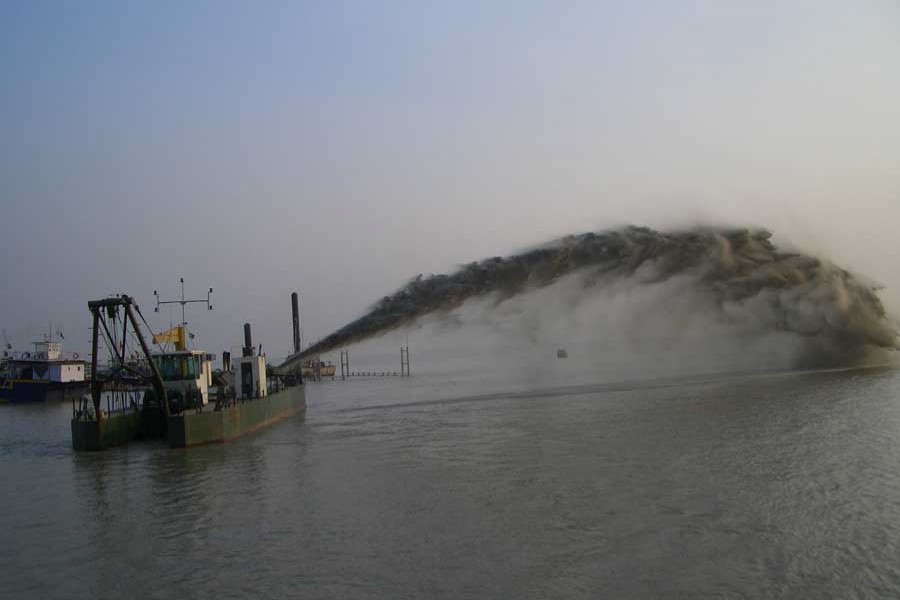The government has taken up a dredging master plan to bring navigability to the internal waterways across the country. Under it, around 10,000 kilometres of river routes will be made navigable through excavating 178 rivers.
The Bangladesh Inland Water Transport Authority [BIWTA] is expected to do the job. As per the plan, it had begun excavation of 12 important river routes, capital dredging in 53 river routes, navigability development of the river route from Mongla port to Pakshi via Chandpur, Mawa, Goalando, and restoration of old Brahmaputra, Dharla, Tulai and Punarbhaba rivers.
Also, excavation of 470km of river routes under the Bangladesh-India river protocol had already begun. It will be jointly financed by the two countries.
The government is planning to bring the dredging work of the inland waterways under a real-time monitoring network. The Ministry of Shipping is expected to initiate a web-based project for the purpose.
The government's move is to undertake multiple mega dredging schemes for tackling a declining trend in the navigability. The proposed monitoring of the activities of the dredgers is seen by many as a welcome move.
Due to the dynamic characteristics of the country's rivers, things like channel development, abandonment and course shifting are very common. Once the total length of the waterway was 24,000 kilometres (km), now it has come down to only 6,000km in monsoon and 3,600 km during lean period.
Lack of maintenance, reduction in upstream flow as well as human interventions are being blamed for such a decline in navigable waterways. The government had earlier taken a number of initiatives to carry out capital dredging, but most of the dredging works failed to bring tangible results.
The quantity of capital and maintenance of dredging has been increasing rapidly as the demand for enhancing navigability is rising with passage of time. However, it is getting tough for the government and private agencies to closely monitor all dredging activities. Getting correct information in time is not always possible.
Once the real-time monitoring system is in place, it will be possible to monitor such activities through a web-based system. As per estimates, the cost of developing the software as well as warranty, maintenance and training has been estimated at Tk 5.8 million. The cost of installation and configuration of the software at each site will be around Tk 0.2 million.
The system is expected to provide real-time dredging information like dredger name, dredging length, velocity, riverbed type and water level. At the same time, it will enable visualisation of real-time dredging location on web-mapping service like Google Maps. It will also show cumulative dredging volume in table and graph. The users will be able to view information on the last three to five years of a particular waterway.
However, the software will help justify the cause of such constant shifting of navigation routes. Its application will run automatically and periodically with a 30-minute interval and upload dredging-related information to the central server from where the web-based application will extract information.
Negative side of the dredging is that it might affect a river's composition, diversity and resiliency in a variety of ways, according to environment analysts. After a river is dredged, its banks become prone to erosion. Eroded banks stimulate further build-up of silt, exacerbating rather than improving problems with navigation.
Currently, many public agencies and private companies have dredgers which are old and do not support any automated system to extract dredging information. For such dredgers, a data entry form is expected to be developed to capture detailed information relating to dredging activities.
It is thus expected that the web-based real-time monitoring would help increase transparency of dredging schemes alongside aiding better coordination and information sharing among ministries.


